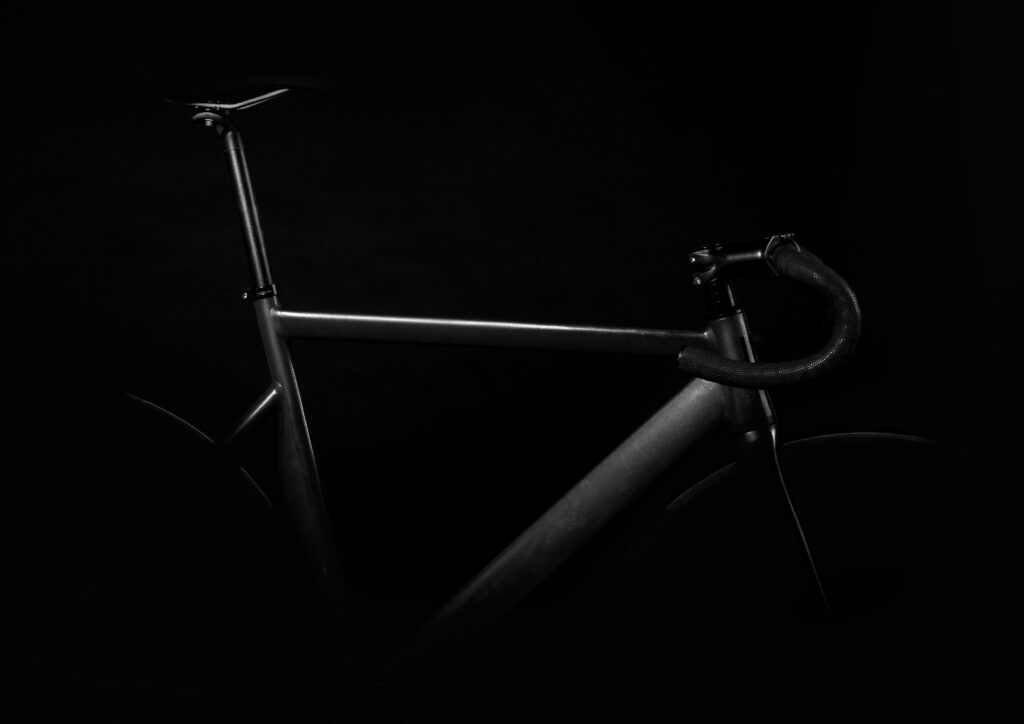Hey there, E-Bike enthusiasts! Get ready to level up your knowledge and skills as we dive into the intricate world of advanced e-bike riding. This section is dedicated to riders who are ready to go beyond the basics and explore the technical aspects of e-biking. From advanced security measures to extreme uphill climbing techniques, we’ve got you covered. In this series, we will tackle a wide range of topics, starting with the crucial task of troubleshooting motor and battery issues. Whether you’re an intermediate rider or a seasoned pro, there’s always room to learn and improve. So let’s get started and become the go-to resource for diagnosing and fixing motor and battery problems on your e-bike!

Common Motor Issues
Motor not turning on
One of the most common motor issues e-bike riders encounter is the motor not turning on. This can be caused by a variety of factors, such as a faulty power supply, a wiring connection problem, or a malfunctioning motor. To diagnose this issue, check the power supply first to ensure it is providing the correct voltage. Next, inspect the wiring connections to make sure they are secure and free from any damage. If both the power supply and wiring connections are in good condition, it may be necessary to test the motor with a multimeter to determine if it is faulty.
Loss of power
Another motor issue that riders often face is a loss of power. This can manifest as a decrease in speed or an inability to climb hills. There are several potential causes for this problem, including a low battery charge, a faulty motor controller, or a malfunctioning throttle. To diagnose the issue, start by checking the battery charge to ensure it is sufficient. If the battery charge is not the issue, inspect the motor controller and throttle for any signs of damage or malfunction. It may be necessary to replace these components if they are found to be faulty.
Strange noises
If you notice strange noises coming from your e-bike motor, it is important to investigate the issue as soon as possible. Unusual sounds such as grinding, rattling, or squeaking can indicate a problem with the motor or its components. One possible cause of strange noises is a misaligned or worn-out gear. In this case, adjusting or replacing the gear may resolve the issue. Additionally, loose or damaged motor mounts can also cause strange noises. Inspect the motor mounts and tighten or replace them as necessary.
Overheating
An overheating motor is a serious issue that should be addressed immediately to prevent further damage. Overheating can be caused by a variety of factors, including a blocked cooling system, excessive load on the motor, or a malfunctioning motor controller. To address this issue, check the cooling system to ensure it is not obstructed by debris or dirt. If the cooling system is clear, reduce the load on the motor by reducing the weight on the bike or avoiding steep climbs. If the problem persists, it may be necessary to replace the motor controller or consult a professional for further assistance.
Diagnosing Motor Issues
Checking power supply
When diagnosing motor issues, it is important to start by checking the power supply. Ensure that the battery is charged and providing the correct voltage. Use a multimeter to measure the voltage output of the battery and compare it to the manufacturer’s specifications. If the voltage is below the recommended range, the battery may need to be replaced or recharged. Additionally, inspect the battery connections for any signs of damage or corrosion. Clean or replace the connections as necessary.
Inspecting wiring connections
After checking the power supply, the next step in diagnosing motor issues is to inspect the wiring connections. Loose or damaged wiring can cause a variety of problems, including a motor not turning on or a loss of power. Start by visually inspecting the wiring connections for any signs of damage or loose connections. If any issues are found, tighten or replace the connections as necessary. It may also be helpful to use a multimeter to test the continuity of the wiring and ensure there are no breaks or shorts.
Testing motor with multimeter
If the power supply and wiring connections are in good condition but the motor is still experiencing issues, it may be necessary to test the motor itself with a multimeter. A multimeter can measure the resistance, voltage, and current of the motor to determine if it is functioning properly. Consult the manufacturer’s documentation to determine the appropriate test points on the motor and use the multimeter to measure the readings. Compare the measured values to the manufacturer’s specifications to determine if the motor is faulty and needs to be replaced.
Battery Issues
Battery not charging
One of the most common battery issues faced by e-bike riders is a battery not charging. This can be caused by a variety of factors, including a faulty charger, a damaged charging port, or a malfunctioning battery. To diagnose this issue, start by checking the charger output. Ensure that the charger is providing the correct voltage and current for the battery. If the charger output is correct, inspect the charging port on the e-bike for any signs of damage or corrosion. Clean or replace the charging port as necessary. If the battery still does not charge, it may be necessary to replace the battery.
Battery draining quickly
If your e-bike battery is draining quickly, it can greatly impact your riding experience. Several factors can contribute to this problem, including excessive use of power assist modes, a high load on the motor, or an aging battery. To diagnose the issue, start by assessing your riding habits and adjusting your power assist usage if necessary. Additionally, reducing the load on the motor by removing unnecessary accessories or reducing weight can help conserve battery power. If these measures do not resolve the issue, it may be time to consider replacing the battery with a higher capacity one.
Inaccurate battery level indicator
An inaccurate battery level indicator can make it difficult to gauge the remaining battery life, leading to unexpected power losses during your rides. This issue can be caused by a faulty battery level sensor or a malfunctioning display panel. To diagnose the problem, start by resetting the battery level indicator according to the manufacturer’s instructions. If the issue persists, inspect the battery level sensor for any signs of damage or malfunction. Replace the sensor if necessary. If the battery level indicator is integrated into the display panel, it may be necessary to replace the display panel to resolve the issue.
Battery not holding charge
If your e-bike battery is not holding its charge, it can significantly impact your riding range. Several factors can contribute to this problem, including an aging battery, a faulty battery management system, or a deep discharge. To diagnose this issue, start by checking the battery voltage with a multimeter. Compare the measured voltage to the manufacturer’s specifications to determine if it is within the acceptable range. If the voltage is below the recommended range, the battery may need to be replaced. Additionally, deep discharges can damage the battery and cause it to lose its ability to hold a charge. Avoid deep discharges by charging the battery regularly and avoid leaving it fully discharged for extended periods.
Diagnosing Battery Issues
Checking charger output
When diagnosing battery issues, it is important to start by checking the charger output. Use a multimeter to measure the voltage and current output of the charger and compare it to the manufacturer’s specifications. Ensure that the charger is providing the correct voltage and current for the battery. If the charger output is below the recommended range, the charger may need to be replaced. If the charger output is within the acceptable range, the issue may lie with the battery or other components of the charging system.
Testing battery voltage
Testing the battery voltage is an essential step in diagnosing battery issues. Use a multimeter to measure the voltage of the battery and compare it to the manufacturer’s specifications. If the measured voltage is below the recommended range, the battery may need to be replaced or recharged. Additionally, check the battery voltage under load by connecting it to the e-bike motor and measuring the voltage while applying power. A significant drop in voltage under load can indicate a weak or damaged battery.
Inspecting battery connections
After checking the charger output and testing the battery voltage, it is important to inspect the battery connections for any signs of damage or corrosion. Loose or damaged connections can cause charging issues or lead to a loss of power. Visually inspect the battery connections and clean or tighten them as necessary. Additionally, check the wiring connections between the battery and other components of the e-bike system. Ensure that these connections are secure and free from damage.

Testing the Electric System
Testing throttle functionality
When testing the electric system of your e-bike, it is important to examine the functionality of the throttle. The throttle allows the rider to control the speed of the e-bike motor. Start by ensuring that the throttle is securely connected and free from any damage or debris. Test the throttle by gradually increasing the throttle position and monitoring the motor response. Ensure that the motor responds smoothly and the throttle does not stick or hesitate. If any issues are detected, inspect and replace the throttle as necessary.
Examining controller performance
The controller is a crucial component of the electric system that regulates the power output to the motor. When testing the electric system, it is important to examine the performance of the controller. Start by inspecting the controller for any signs of damage or overheating. Ensure that the wiring connections to the controller are secure and free from damage. Test the controller by operating the e-bike under various conditions, such as different power assist levels or load levels. Monitor the motor performance and ensure that the controller operates smoothly without any fluctuations or inconsistencies.
Checking pedal assist sensor
The pedal assist sensor is responsible for detecting the rider’s pedaling motion and providing power assist accordingly. When testing the electric system, it is important to check the functionality of the pedal assist sensor. Inspect the sensor for any signs of damage or misalignment. Ensure that the wiring connections to the sensor are secure and free from damage. Test the sensor by pedaling the e-bike and monitoring the power assist response. Ensure that the power assist engages smoothly and adjusts according to the pedaling effort. If any issues are detected, inspect and replace the pedal assist sensor as necessary.
Troubleshooting Brake-Related Issues
Brake sensor not working
If you experience issues with the brake sensor on your e-bike, it is important to troubleshoot the problem to ensure safe braking. A brake sensor not working can manifest as the motor not disengaging when the brake is applied or the motor not engaging when the brake is released. Start by inspecting the brake sensor for any signs of damage or misalignment. Ensure that the wiring connections to the sensor are secure and free from damage. If the brake sensor is integrated into the brake lever, inspect the lever for any signs of damage or malfunction. Replace the sensor or brake lever as necessary to resolve the issue.
ABS system malfunction
Some e-bike models are equipped with an ABS (Anti-Lock Braking System) to provide enhanced braking control. If you experience issues with the ABS system, it is important to troubleshoot the problem to ensure safe braking performance. An ABS system malfunction can manifest as inconsistent or ineffective braking. Start by checking the ABS system components, such as the sensors and control unit, for any signs of damage or malfunction. Ensure that the wiring connections to the ABS system are secure and free from damage. Consult the manufacturer’s documentation for specific troubleshooting steps for your e-bike model.
Brake dragging
If you notice that one or both of your brakes are dragging, it is important to address the issue to prevent excessive wear on the brake pads and reduced braking performance. Brake dragging can be caused by a variety of factors, including misaligned brake calipers, loose brake cables, or worn brake pads. Start by inspecting the brake calipers for any signs of misalignment and adjust them if necessary. Ensure that the brake cables are properly tensioned and free from any obstructions or damage. If the brake pads are worn, replace them with new ones to resolve the dragging issue.

Fixing Gear Shifting Problems
Gears slipping
If you experience gears slipping on your e-bike, it can greatly impair your riding experience and reduce power transfer efficiency. Gears slipping can be caused by several factors, including misadjusted derailleurs, worn chain, or damaged cassette. Start by inspecting the derailleurs for any signs of misalignment and adjust them if necessary. Ensure that the chain is properly lubricated and free from any rust or damage. If the chain is excessively worn, it may need to be replaced. Additionally, inspect the cassette for any signs of wear or damage. Replace the cassette if necessary to eliminate gear slipping.
Difficulty shifting gears
Having difficulty shifting gears on your e-bike can be frustrating and hinder your riding performance. Difficulty shifting gears can be caused by a misadjusted gear indexing, worn shift cables, or damaged shifters. Start by inspecting the gear indexing to ensure it is properly adjusted. Consult the manufacturer’s documentation for specific instructions on how to adjust the gear indexing for your e-bike model. If the shift cables are worn or damaged, replace them with new ones to ensure smooth shifting. Inspect the shifters for any signs of damage or malfunction and replace them if necessary.
Derailleur misalignment
Misaligned derailleurs can cause various shifting issues on your e-bike, including gears skipping or difficulty shifting into certain gears. To fix derailleur misalignment, start by inspecting the derailleur hanger for any signs of damage or bending. If the derailleur hanger is bent, it may need to be aligned or replaced. Next, adjust the derailleur’s limit screws to ensure that it is properly aligned with the cassette. Refer to the manufacturer’s documentation for specific instructions on adjusting the limit screws for your e-bike model. Additionally, ensure that the derailleur jockey wheels are clean and properly lubricated.
Resolving Display and Control Panel Problems
Display not functioning
If the display on your e-bike is not functioning, it can be challenging to access important information such as battery level or power assist mode. A display not functioning can be caused by a variety of factors, including a loose connection, a damaged display, or a faulty control unit. Start by inspecting the display connection to ensure it is securely attached and free from any damage or corrosion. If the connection is secure, inspect the display itself for any signs of damage. If the display is damaged, it may need to be replaced. If the issue persists, consult a professional or the manufacturer for further assistance.
Buttons not responding
If the buttons on your e-bike display or control panel are not responding, it can greatly hinder your ability to navigate the menu or adjust settings. Buttons not responding can be caused by a faulty button, a loose connection, or a damaged control unit. Start by inspecting the button connections to ensure they are securely attached and free from any damage or corrosion. If the connections are secure, test each button individually to determine if any are faulty. Replace the faulty buttons or the entire control unit as necessary to resolve the issue.
Incorrect display readings
If you notice that the display on your e-bike is providing incorrect readings, such as speed or distance traveled, it is important to address the issue to ensure accurate monitoring of your riding performance. Incorrect display readings can be caused by a variety of factors, including a misconfigured display, a faulty speed sensor, or a damaged control unit. Start by inspecting the display settings to ensure they are properly configured for your e-bike model. If the settings are correct, check the speed sensor for any signs of damage or misalignment. Consult the manufacturer’s documentation for specific troubleshooting steps for your e-bike model.

Addressing Communication Errors
Bluetooth connection issues
If you are experiencing Bluetooth connection issues with your e-bike, such as the inability to connect with your smartphone app, it can hinder your ability to access important ride data or adjust settings remotely. Bluetooth connection issues can be caused by several factors, including a weak Bluetooth signal, a faulty Bluetooth module, or incompatible software versions. Start by ensuring that your smartphone and the e-bike’s Bluetooth module are within range of each other. If the signal is weak, move closer to the e-bike. If the issue persists, consult the manufacturer’s documentation for specific troubleshooting steps for your e-bike model.
Inability to connect with smartphone app
If you are unable to connect your e-bike with a smartphone app, you may be missing out on various features and functionalities. Inability to connect with a smartphone app can be caused by several factors, including incompatible software versions, a faulty Bluetooth connection, or a malfunctioning app. Start by ensuring that the app and the e-bike’s software versions are compatible with each other. If an app update is available, install it and try again. If the issue persists, check the Bluetooth connection between the e-bike and the smartphone. Consult the manufacturer’s documentation or contact customer support for further assistance.
Controller not communicating with other components
If the controller of your e-bike is not communicating with other components, it can lead to various issues, such as a loss of power or inaccurate readings. Controller communication issues can be caused by a variety of factors, including loose wiring connections, damaged cables, or a malfunctioning controller. Start by inspecting the wiring connections between the controller and other components to ensure they are securely attached and free from any damage or corrosion. If the connections are secure, test the cables for continuity using a multimeter. If any cables are found to be faulty, replace them to restore communication between the controller and other components.
When to Seek Professional Help
Complex motor or battery repairs
While many motor and battery issues can be diagnosed and resolved by e-bike enthusiasts, there are instances where professional help may be necessary. Complex motor or battery repairs, such as rewinding a motor or replacing internal battery components, often require specialized knowledge and tools. If you are not comfortable or experienced in performing these types of repairs, it is best to seek professional assistance. Professional e-bike technicians have the expertise and resources to diagnose and repair complex motor or battery issues effectively and safely.
Software and firmware updates
Keeping your e-bike’s software and firmware up to date is essential for optimal performance and compatibility with various components and accessories. However, performing software and firmware updates can be a complex process that requires technical knowledge and specific tools. If you are unsure how to update the software or firmware on your e-bike, it is recommended to seek professional help. E-bike manufacturers or authorized service centers can ensure that the updates are performed correctly and without any issues.
Component replacement
If you need to replace major components of your e-bike, such as the motor, battery, or controller, it is best to seek professional assistance. Component replacement often involves intricate wiring connections, calibration procedures, and compatibility considerations. Professional e-bike technicians have the expertise and resources to ensure that the replacement components are properly installed and integrated into your e-bike system. Additionally, they can provide guidance on selecting the correct components for your specific e-bike model and riding needs.




